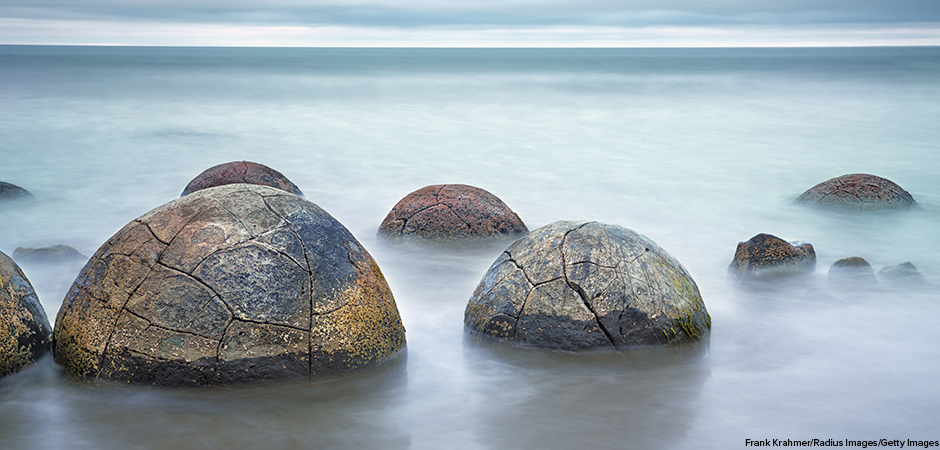
For hundreds of years, explorers and researchers believed Earth had an eighth continent, but they couldn’t find it. Then in 2017 scientists discovered an underwater landmass located southeast of Australia, under the islands of New Zealand. They named the underwater continent Zealandia. They began mapping parts of the landmass in 2019. Now in 2023, an international team of scientists has completed a full geologic map of Zealandia. They say it’s the first continent ever to be completely mapped.
Zealandia is also called by its Māori name, Te Riu-a-Māui. It means the hills, valleys, and plains of Māui. In Polynesian mythology, Māui is described as the great East Polynesian explorer of the Pacific Ocean. The Māori are the Polynesian people of New Zealand.
Geologic Discoveries
Zealandia covers nearly two million square miles (five million sq km) of the Pacific Ocean floor. Almost all of the landmass is at depths of 0.6 to 1.2 miles (1-2 km). Its underwater location made it very difficult to study. Only about five percent of Zealandia is above water. All of its geologic features, such as volcanoes, valleys, and mountains, lie at the bottom of the ocean. The recently completed geologic map shows where those features are located. It also indicates where different types of rock and sediment are found. Sediment is loose material with rock particles that settles at the bottom of a body of water. The latest mapping effort charted the final region, North Zealandia. This underwater area lies between New Zealand, New Caledonia, and Australia.
Scientists scraped the seabed for rock and sediment samples in various areas of Zealandia to understand its makeup. They uncovered a rich assortment of minerals, including hardened lava and limestone. They analyzed pebbles, sandstones, and volcanic rocks called basalt. They dated the pebbles to between 130-110 million years ago, the sandstones to 95 million years ago, and the basalt to 40 million years ago.
How Zealandia Began
Researchers believe that about 183 million years ago, Zealandia was once part of the ancient supercontinent Gondwana. All of Earth’s land was one giant piece until it began to break apart. The research team that mapped North Zealandia discovered a giant volcanic region along the edge of Gondwana in the area that eventually separated to form Australia and Antarctica. As the supercontinent separated, Zealandia was pulled in different directions. Much like pizza dough, Zealandia became twisted, stretched, and thinned. One area of land was ripped, allowing ocean water to fill the gap and form the Tasman Sea between Australia and New Zealand. A few million years later, the breakaway continued until Zealandia had split off completely from West Antarctica. That action created the Pacific Ocean.
Putting the Pieces Together
The detailed maps of Zealandia reveal strips of distinct geologic features that run northwest to southeast. Like a jigsaw puzzle, those strips match up with those of West Antarctica. It confirms that Zealandia and West Antarctica once fit together as a single piece of land. Scientists believe Zealandia continued to stretch and change direction for millions of years – becoming an island for a while. Then , around 25 million years ago, the world’s thinnest, smallest, and youngest continent sank. Geologists say there’s more exploration and discovery ahead. Scientists also want to know when, how, and why the geological events took place.
